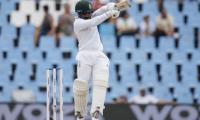Though Pakistan is not in election season right now, it is legitimate to ask why people vote. It is even more pertinent to question why the poor and marginalized vote under unequal conditions. How does the level of political engagement change across different sets of rural citizens?
If there is one recent work that is not to be missed to answer some of these questions, it is Shandana Khan Mohmand’s (2019) ‘Crafty Oligarchs, Savvy Voters: Democracy under Inequality in Rural Pakistan’.
It is a thorough book penning a riveting account of the political economy of voting in rural areas for different socio-economic groups, castes and lineages by using a mix of qualitative and quantitative research. Lots of work has gone into writing it at least since 2007, if not even before it. The book discerns trends of the elections of 2002 (retrospectively), 2008, 2013 and local government elections in six case study villages and 32 additional villages of district Sargodha.
On the one hand, there is a commonly held notion that high socio-economic inequality can constrain the independent decision-making on voting by the rural poor; yet on the other hand there is high political competition between various political actors that provides some space and bargaining power to even the marginalized. As Mohmand says, “Democracy can empower marginalised voters even in highly unequal places”.
There are four broad existing explanations for voting behaviour amongst the rural electorate: the hold of the landed power, kinship or biradari-ism, patron-client relationship, and party or class identification. The author methodically shows that all of these above listed explanations are partly applicable in their own right but they do not tell the whole story to explain the rural marginalized voters.
Rather than viewing voters through the lens of dependence relations, rural voters need to be seen as rational beings who build strategic linkages through the politics of ‘vote blocs’ (‘dharras’)/super factions to improve their bargaining power and socio-economic conditions at the local village level. The link between ‘vote bloc’ leaders who act as intermediaries between politicians and the villagers is “multi-faceted” and lasts throughout the year.
Voting is considered a collective activity in rural Punjab and elections are of consequence to the rural poor whereby they negotiate a better relationship with the village elite to allow them better access to public services in an “underprovided” and “distant” state. Depending on the initial endowments since the colonial government, some villages called “proprietary” villages (where the landowning class were given private rights over village land) may be more unequal than “Crown” villages (where land was given to more diverse proprietors on less secure property rights terms).
In a path-dependent way of continuing with social organisation since the colonial times, the bargaining power of the rural marginalized increases or decreases depending on the level of inequality; it decreases in more unequal villages and increases in less unequal villages. There is real variation amongst the villages even in the same district primarily due the way these villages were established and their initial social structures that continue to persist. The underlying inequality has an impact on the way democracy functions, “democracy works better when land and social inequality is lower”.
Rather than telling the story of the stronghold of the landed power over voting decisions, the book gives an account of fissures and fractures of village social organisation where landed power matters to a certain extent but so do the other factors such as “vote blocs” internal dynamics driven by “hierarchal social structures” of caste/lineage determinants and shaped by the desire for social mobility due to new socio-economic factors. Non-agricultural occupations proliferating and proximity to urbanization helps with the upward mobility.
New leaders emerge amongst small peasant proprietors and artisan castes. The landless and poor Muslim Sheikh caste is still at the bottom of the village hierarchy. Still, a good level of political competition helps the rural marginalized to better negotiate their way with the traditional sources of village power.
Mohmand’s work is in a way reaffirmation of political economist Akbar Zaidi’s thesis that non-agriculture-based occupations form a sizeable part of the modern rural economy. The hold of the landed power is not as fixed and entrenched as we have been made to believe by numerous commonly held accounts.
One of the high points of the book is that it throws light at the role of intermediation in rural politics. The marginalized need brokers who have connections with higher level politicians and state bureaucracy not only to access much needed public services such as health, education and sanitation but equally important to deal with the police and courts. Since the state is “distant” and “unresponsive”, there is need for intermediation for the rural poor. The “vote bloc” politics at the local village level takes these considerations into account.
Political parties act as “conglomerations” of “multiple clientelist networks” as they have been weakened historically and now they are based on individual and personal power of these networks. Even biradari-ism intersects with clientelistic determinants. In other words, rural voters act collectively as groups in these “vote blocs” and caste and lineage politics may be one of the ways to collectivize their voice and concerns.
We need reforms to chip away the sources of structural inequality as well as to deepen the democratization process such as local government institutionalization. This will help rural marginalized groups access the state and its services with less need of mediation by brokers and their patrons and will also help political leaders reconfigure their way of doing politics.
The writer is an Islamabad-based
social scientist.
Email: fskcolumns@gmail.com
Coordinated attacks sent wave of insecurity across country, tarnished Pakistan's image globally
For now, IMF agreement provides essential cushion to help Pakistan return from the brink of Sri-Lanka-type default on...
Maintenance of international peace and security was projected as main moral purpose of UN
While future remains uncertain, our choices shaped by different internal and external factors lead to different scenario
We are haunted by systemic inefficiencies that threaten to dismantle this fragile ascent
Misinformation runs rampant, webbed into political rhetoric, social commentaries, viral posts, and group chats







